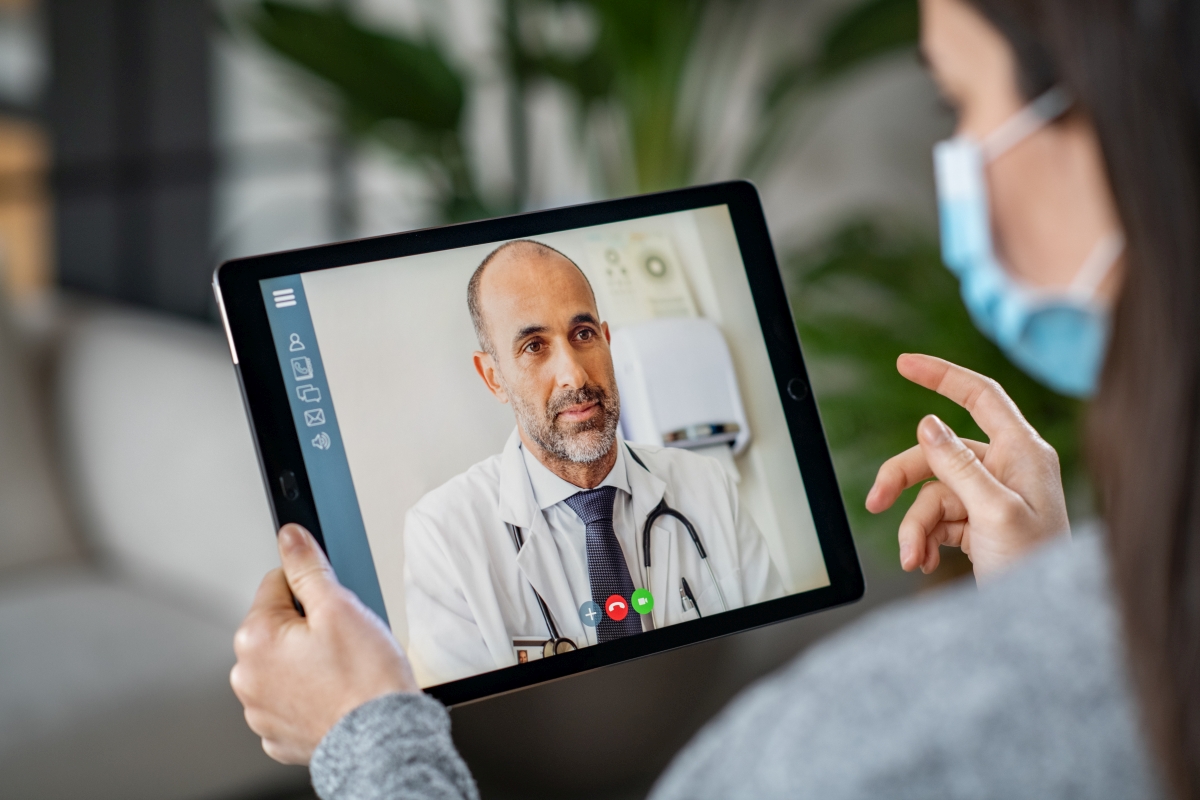Checking Out the Benefits and Difficulties of Teledoctors in Modern Health Care
As the health care landscape advances, teledoctors have emerged as a pivotal part in linking gaps in medical accessibility and performance. How can the medical care market balance these benefits with the inherent difficulties?
Expanding Accessibility to Treatment
Telemedicine has become a critical development in modern-day medical care, substantially expanding access to care for varied populations. By leveraging electronic technology, teledoctors have transformed the standard health care shipment design, making it possible for clients in underserved or remote areas to receive prompt clinical assessment. This development is specifically advantageous for people living in rural communities, where the shortage of health care facilities and professionals frequently leads to postponed or insufficient therapy.
Teledoctors contribute in linking the space developed by geographical barriers. With virtual appointments, individuals can access a variety of medical care solutions without the requirement for extensive traveling. This is particularly beneficial for those with mobility problems or chronic conditions needing regular clinical interest. Furthermore, telemedicine improves connection of care by allowing routine follow-ups and surveillance, consequently boosting person end results.
The combination of teledoctors right into healthcare systems additionally sustains the administration of public health and wellness crises by promoting rapid feedback and triage. During pandemics, for circumstances, online appointments minimize the worry on physical healthcare centers, lessening exposure threats for both individuals and medical care companies. As telemedicine remains to develop, it promises to improve the landscape of health care availability, making it a lot more effective and inclusive.
Cost-Effectiveness of Teledoctors
The cost-effectiveness of teledoctors is a substantial variable driving their widespread adoption in healthcare systems. By decreasing the demand for physical facilities and in-person sees, teledoctors supply a more budget friendly alternative to conventional health care shipment.
Moreover, teledoctors assist in a much more effective use health care sources by lessening unnecessary emergency clinic sees and hospital admissions. People can access timely appointments for small disorders or follow-up treatment, which aids to ease the concern on overstretched healthcare centers. This efficiency not just results in cost financial savings for health care suppliers however likewise lowers the financial strain on clients that could or else encounter expensive medical facility bills.
Moreover, teledoctors can help in handling chronic illness extra effectively by offering consistent monitoring and timely treatments. This positive approach can stop problems, thus reducing lasting treatment costs. Overall, teledoctors present a sensible option to the escalating prices of health care, while maintaining high quality treatment shipment.
Enhancing Person Benefit
While cost-effectiveness plays a pivotal function in the surge of teledoctors, enhancing patient benefit stands as an additional engaging advantage of this healthcare design. With the assimilation of teledoctors, patients can bypass the generally lengthy procedure of organizing and participating in in-person consultations. This design eliminates the need for travel, reducing time spent en route and waiting areas, consequently using significant time cost savings for clients. Especially for those with wheelchair problems or living in remote areas, teledoctors supply a vital web link this contact form to healthcare that could or else be unattainable.
Furthermore, teledoctors supply versatile organizing, allowing individuals to organize consultations sometimes that ideal fit their individual and professional commitments. This flexibility is very useful for individuals stabilizing requiring work routines or family members responsibilities, guaranteeing that health care can be incorporated perfectly right into their lives. In addition, the ability to gain access to article physician from the comfort of one's home can bring about enhanced individual involvement and adherence to therapy plans, as the barriers to seeking treatment are reduced.
The benefit supplied by teledoctors not just boosts the patient experience but likewise adds to a much more receptive and effective medical care distribution system, ultimately sustaining better health results.
Resolving Privacy Concerns
Amid the growing adoption of teledoctors, privacy worries become a significant factor to consider. As health care increasingly depends on digital platforms, guaranteeing the confidentiality of client information becomes critical. The digitization of medical documents and making use of telecommunication modern technologies demand robust security actions to secure delicate data from unauthorized access and violations.
Medical care service providers should adhere to rigorous laws, such as the Medical Insurance Transportability and Responsibility Act (HIPAA) in the United States, which develops nationwide requirements for safeguarding clinical info. Compliance with such laws is vital in preserving client trust fund and guaranteeing their data is taken care of properly. Encryption of information, secure interaction networks, and regular audits are several of the steps that can be implemented to improve data security.
Cybersecurity hazards are developing, and medical care companies should stay watchful to brand-new susceptabilities. Additionally, informing both people and healthcare suppliers concerning best practices in information privacy is crucial.
As teledoctors become much more important to medical care delivery, dealing with privacy issues is necessary to ensure both the efficacy and credibility of these services.

Browsing the Digital Split
Bridging the digital divide is a crucial challenge in the widespread fostering of teledoctors. The advantages of teledoctors-- such as boosted availability and convenience-- remain unreachable for many people that might most benefit from them.
Additionally, efforts to subsidize modern technology for low-income homes can play a crucial function in making certain equitable accessibility. Healthcare providers and area organizations need to work together to supply digital proficiency programs, encouraging clients to browse telehealth systems with confidence.

Final Thought
The integration of teledoctors right into modern health care offers substantial advantages, consisting of enhanced accessibility to care, cost-effectiveness, and improved person benefit. Nonetheless, challenges such as personal privacy go right here concerns, the digital divide, and cybersecurity dangers have to be dealt with to maximize these advantages. By implementing robust information defense steps, enhancing electronic literacy, and guaranteeing safe technical facilities, the potential of teledoctors can be fully realized, advertising fair healthcare delivery and transforming the medical care experience for all people.
